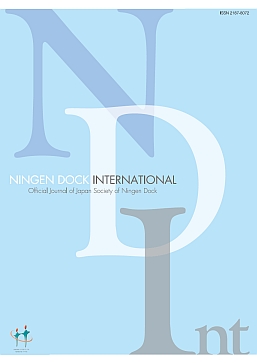Objective: Cerebral arteriosclerosis is a major public health problem because it is one of the main causes of ischemic stroke. A paucity of material is available on factors associated with cerebral arteriosclerosis detected by magnetic resonance angiography (MRA) in a healthy population. The aim of this study was to determine what factors were associated with cerebral arteriosclerosis detected by MRA in persons undergoing a brain check-up.
Methods: We retrospectively investigated 5,897 people aged 40 and over who visited a hospital for a brain check-up. We obtained data on body mass index (BMI), blood pressure (BP), total cholesterol, triglycerides, and fasting glucose (FG). We performed logistic regression analysis to examine associations between vascular risk factors and cerebral arteriosclerosis.
Results: Cerebral arteriosclerosis was observed in 326 subjects (5.5%). After adjustment for other risk factors, BMI (odds ratio [OR], 1.066; 95% confidence interval [CI], 1.024–1.110), systolic BP (OR, 1.019; 95%CI, 1.014–1.025), and FG (OR, 1.005; 95%CI, 1.003–1.008) were significantly associated with arteriosclerosis. Obesity (BMI ≥ 25 kg/m2; OR, 1.622; 95%CI, 1.258–2.090), hypertension (systolic BP ≥ 140 mmHg or diastolic BP ≥ 90 mmHg; OR, 1.911; 95%CI, 1.503–2.429), and impaired FG (FG ≥ 110 mg/dL; OR, 1.411; 95%CI, 1.111–1.791) were independent predictors. Factors related to dyslipidemia were not associated with arteriosclerosis.
Conclusions: Obesity, hypertension, and impaired FG were independently associated with a higher risk of arteriosclerosis detected by MRA in study participants undergoing brain check-ups, while dyslipidemia, which is a common risk factor of arteriosclerosis, was not.
抄録全体を表示
